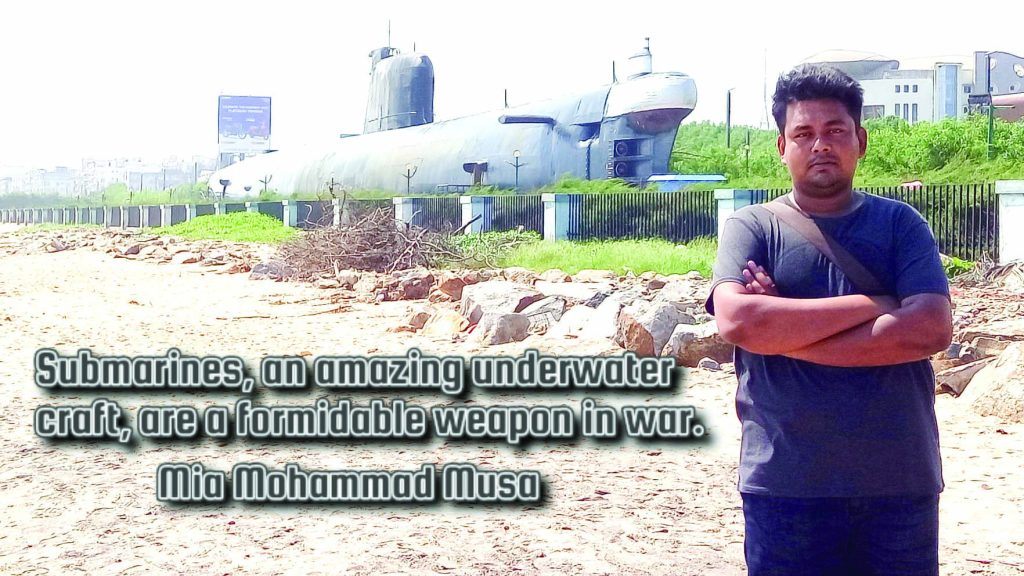
There are two types of submarines depending on the fuel, diesel-electric submarines, and nuclear submarines, but there are many other types of submarines. Diesel-electric submarines are diesel-powered but run-on diesel when afloat, and electric motors when submerged silently. Nuclear submarines are submarines powered by nuclear energy. America’s largest submarine is the USS Michigan. Know some parts of the submarine and their work. Let us talk about two functions: The conning tower is the control room from where the entire submarine is controlled. The torpedo room is where the torpedoes are kept and fired at the enemy. PRESSURE HULL The outer cavity is a pressure hull holding the outside water pressure.
At a depth of 600 meters of water, the pressure is about 60 times higher than normal, about 900 psi! Terrible thing! The shell is divided into two parts, the outer one is waterproof, and the inner one is made of steel or titanium door. Some submarines have rubber covers on the outside to reduce noise. How to move? By the engine. If the engine is diesel, it works like a normal car, and if it is unclear, the nuclear fuel burns to generate power, and the engine turns the propeller, and the propeller propels the submarine forward, like a ship. How do submarines float and sink? With ballast tanks. See in the picture how many empty chambers there are in submarines; they are called ballast tanks and can be filled with water at will. When floating, the ballast tank can be emptied and filled with air; when sinking, the chambers can be filled with water in a very controlled manner to sink to the desired depth. There are also air chambers that control the movement of the submarine using only air. With the help of small wings and propellers on both sides, the angle of sinking or going back and forth is fixed or adjusted.
What is the advantage of nuclear submarines over diesel-electric submarines? There are many advantages. A diesel engine needs air to run with diesel which is difficult to get underwater, so it often has to come up or generate troublesome air. However, nuclear submarines do not need air, and nuclear fuel generates heat without air to run the engine. Moreover, nuclear submarines do not make noise; diesel engines make noise, which is useful during wartime. Again, filling oil in a diesel sub is also a hassle and a safety issue.
Nevertheless, a nuclear submarine can go for many days without refueling, although it has to come up often to get food! Suppose a modern submarine can run continuously for 25 years without taking any fuel if there is no food! Modern submarines’ movement or torpedoes’ firing are all perfectly controlled by computers. When submerged, the crew needs oxygen to survive, and that oxygen is produced by the submarine itself or by using cylinders.
The price of the nuclear sub is low, so not all countries can buy or use it. In 1951, the US launched its first nuclear submarine, the Nautilus, after Jules Verne’s novel Twenty Thousand Leagues Under the Sea. The world’s first nuclear submarine US Nautilus was 320 feet long and cost 55 million dollars. Russia launched its first nuclear submarine in 1958. The world’s largest submarine is the Russian Typhoon class submarine. From 1960 to 1997, Russia built a total of 245 nuclear submarines, which is more than the submarines of the rest of the world. Everyone is afraid of Putin!
Currently, six countries have nuclear submarines: America, Russia, France, the United Kingdom, China, and India. Countries such as Argentina and Brazil will soon add submarines to their fleets. America’s largest submarine is the US Michigan.
Some data on the Michigan submarine:
Type : SSBN/SSGN
Displacement, i.e., water moves (weight): 16,764 tons
Length : 560 feet
Engine : Two turbines totaling 60,000 horsepower, one 325 horsepower motor.
Propeller : 7-blade screw-type propeller
Speed : Floating – 22 km per hour and submerged – 29 km per hour. Range means how far one can go at once: no limit, forever unless food runs out.
It can run below 800 feet.
Crew : 140 people
Armament : 4 x 21-inch diameter torpedo tubes that fire ship-destroying torpedoes.
Made by : General Dynamics Electric Boat.
